#Emilia Unda
Text
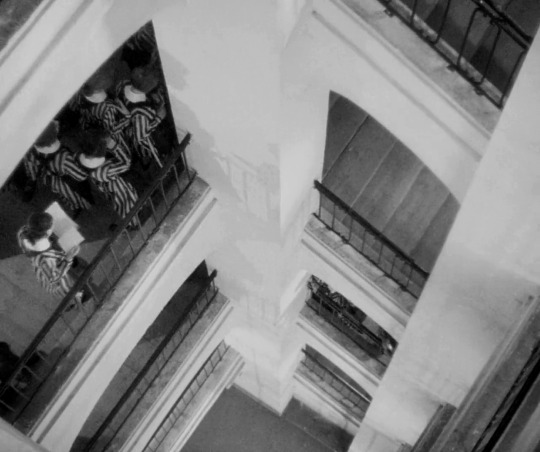
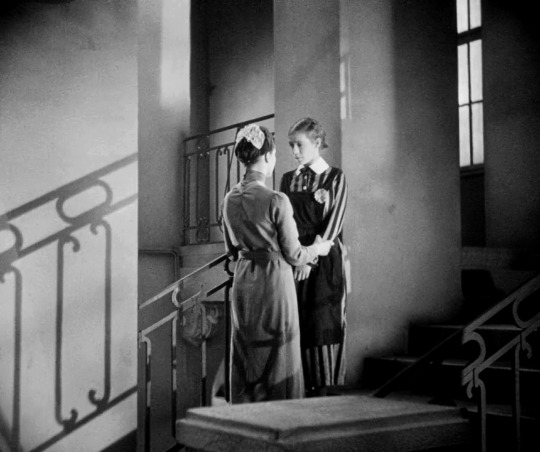

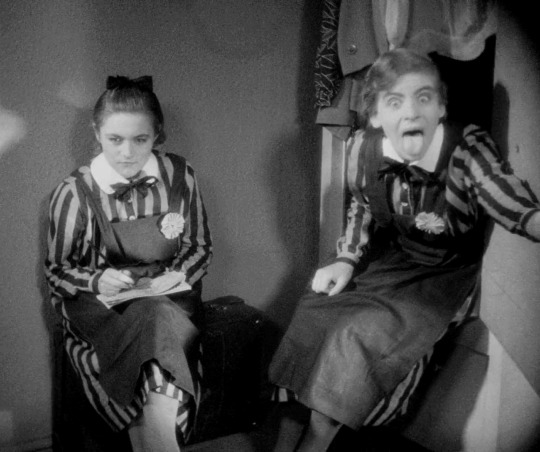


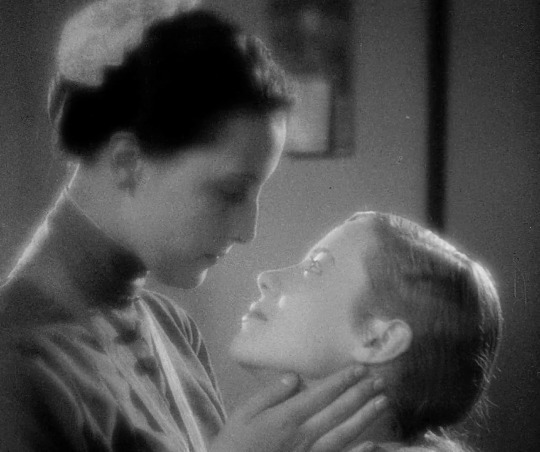

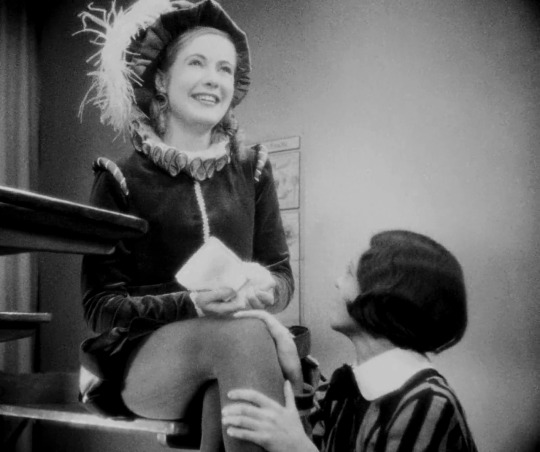


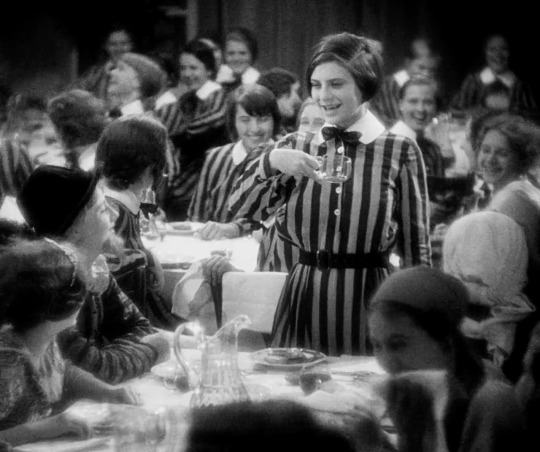
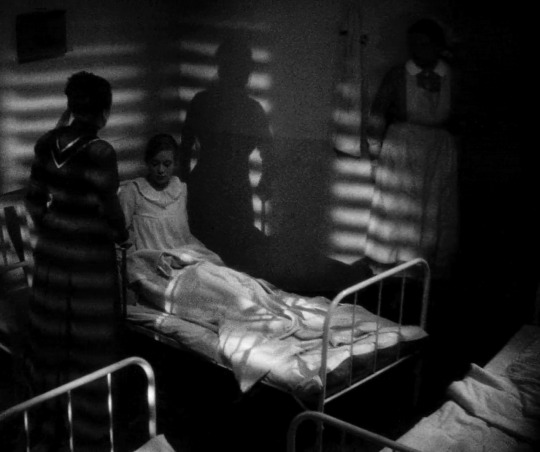



Mädchen in Uniform (1931)
"...Goebbels tried to eviscerate all copies of the film, in equal parts a landmark of queer cinema, a groundbreaking lesbian love story, and a cogent antifascist statement. Made by women who intimately understood and delighted in women, Mädchen in Uniform is a reminder, now as ever, that if enough of us stand up for each other, we can all be safe, together."
➥ the first (real) lesbian kiss in cinema
#mädchen in uniform#mädchen in uniform 1931#leontine sagan#hertha thiele#dorothea wieck#ellen schwanneke#annemarie von rochhausen#emilia unda#hedwig schlichter#1930s#1931#lgbtq#lesbian#filmedit#film#cinema#movies
202 notes
·
View notes
Text

Mädchen in Uniform (1931) poster of years later.
(Click for full size, but if the picture is narrow somehow, then ope it in a new tab.)
2 notes
·
View notes
Photo
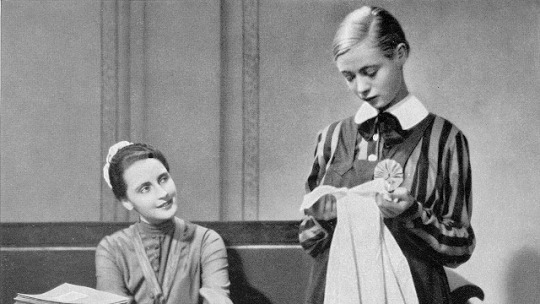
Dorothea Wieck and Hertha Thiele in Mädchen in Uniform (Leontine Sagan, 1931)
Cast: Hertha Theile, Dorothea Wieck, Emilia Unda, Hedy Krila, Ellen Schwanneke, Erika Mann, Else Ehser, Gertrud de Lalsky, Lene Berdolt, Margory Bodker, Charlotte Witthauer, Ethel Reschke, Doris Thalmer. Screenplay: Christa Winsloe, Friedrich Dammann, based on a play by Winsloe. Cinematography: Reimar Kuntze, Franz Weihmayr. Art direction: Fritz Maurischat, Friedrich Winckler-Tannenberg. Film editing: Oswald Hafenrichter. Music: Hanson Milde-Meissner.
An aura of naughtiness still clings to the title of Mädchen in Uniform, as if this drama set in a German girls' school were some sort of exploitation flick. That's unfortunate, because what we have instead is a sensible, sensitive account of the emotional confusion of adolescence, done with a finesse in acting and camerawork that mostly seemed to escape Hollywood filmmakers in 1931. The premise is this: Manuela (Hertha Theile) is the new girl at a school run by a grim-faced martinet (Emilia Unda) who believes that education should be a matter of Prussian discipline. Naturally, the students rebel as much as they can, as do some of the teachers, especially Fräulein von Bernburg (Dorothea Wieck), who believes in kindness and love as a way to inspire the girls. Naturally, all of the girls love Fräulein von Bernburg, who is quite good-looking, but Manuela, whose mother died when she was a baby, is especially drawn to her -- so much so that she freezes with embarrassment whenever the teacher calls on her in class. Eventually, this leads to a declaration of love before the whole school, and a consequent scandal that pits the head of the school against not only Manuela but also Fräulein von Bernburg. Director Leontine Sagan effectively stages both the boisterous scenes with the girls and the quiet ones between the principal characters. The film serves as an indictment of the harshness of the school system, which may have been as much a reason for its being banned when the Nazis came to power as its understanding and approving of the schoolgirl infatuation, which led to its being banned and heavily cut in the United States. It's often called a "lesbian classic," which it may well be, but it also tells a universal story irrespective of sexual orientation.
6 notes
·
View notes
Photo

- You must come to your senses. You must recover, whatever it takes.
- Recover? From what?
- You're not allowed to love me... so much.
Mädchen in Uniform, Leontine Sagan (1931)
#Leontine Sagan#Christa Winsloe#Friedrich Dammann#Hertha Thiele#Dorothea Wieck#Ellen Schwanneke#Emilia Unda#Hedy Krilla#Reimar Kuntze#Franz Weihmayr#Hanson Milde Meissner#Oswald Hafenrichter#1931#woman director
58 notes
·
View notes
Photo



Mädchen in Uniform | Leontine Sagan / Carl Froelich | 1931
Emilia Unda, Hertha Thiele
#Emilia Unda#Hertha Thiele#Leontine Sagan#Carl Froelich#Mädchen in Uniform#1931#Madchen in Uniform#Madchen in Uniform 1931
57 notes
·
View notes
Text

Mädchen in Uniform film advertisement (February, 1932.)
It looks like Christa Winsloe herself created this. (Hertha is the one who matters to me. Others are important for the plot, but my heart is for Hertha, and I'll do all possible to make her famous as she deserves it.)
christas-museum (De: Christas museum, Eng: Christa's museum) is the same (fame part, but online) for Christa Winsloe.
#Mädchen in Uniform#Madchen in Uniform#Christa Winsloe#Christa's museum#Dorothea Wieck#Hertha Thiele#Ellen Schwanneke#Emilia Unda#advertisement#newspaper#magazine#(no idea which type of periodic it is from)
16 notes
·
View notes
Photo
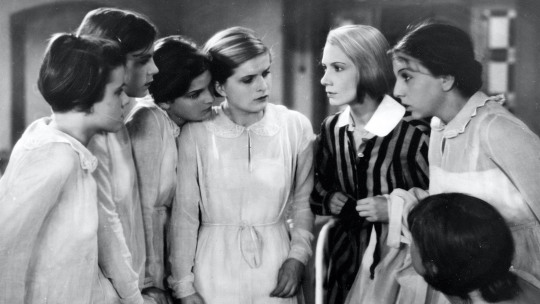
“Women Make Film” marathon reviews (1/6)
Mädchen in Uniform (1931, Germany)
By 1931, Germany stood at the brinks of history. Its harsh treatment by World War I’s victors and economic depression compelled some German politicians to channel wells of hatred for political expedience. In two years’ time, Weimar Germany would be transformed by the Nazi Party. Between 1918 and 1932, Germany’s cinema had flourished. The lack of money flowing into its industry inspired the creation of an array of genres and bold filmmaking styles, filmmakers working in innovative ways to express complicated ideas. German Expressionism – pairing wildly distorted geometric environs with plotlines on dark topics – is the most famous style of this era, even if it was not the most popular among German audiences during this time. Inspired by New Objectivity (films that focused on post-WWI middle class despair), though not an example of this movement, Leontine Sagan’s Mädchen in Uniform is one of the final great films of this period and a landmark piece of queer cinema. Mädchen in Uniform unleashed a final, rebellious roar against the authoritarian ideas that would overtake Germany.
Fourteen-year-old Manuela von Meinhardis (Hertha Thiele) is the new student at an all-girls boarding school helmed by Fräulein von Nordeck zur Nidden (Emilia Unda). Her father is a military officer who is barely home; her mother passed away when she was much younger. The staff seize Manuela’s belongings and outfits her in a vertical-striped uniform. Is this a school, a military barracks, or prison? In this sprawling complex with well-manicured grounds and Greco-Roman-inspired columns, its students march in rows of two, their transgressions receiving demerits from the staff. Beneath the regimentation, Manuela finds a welcoming, supportive culture among her fellow girls. Each teacher is responsible for their respective dormitory wing, and Manuela is assigned to Fräulein von Bernburg (Dorothea Wieck). Some of Manuela’s first greeters openly express their crush on the young von Bernburg – who kisses her students on the forehead good night.
At the end of her first day, Manuela is understandably still feeling nervous about whether she will adjust to life at this school. But lo and behold, Manuela, rather than a “good night” kiss on the forehead, receives a kiss on the lips from Fräulein von Bernburg. Manuela’s crush spirals into love for her schoolteacher, leading to an accidental climax that upends the school’s veneer of discipline and emotional/sexual repression.
In this boarding school, the students are starving for affection. The teachers address students by their surnames; they drill them in prim and proper womanhood daily. Letters to and from the outside world are verboten, nor are pictures of men. And in such a world, there is obviously no room for queerness, let alone any teenage romantic longing. But among the students, there is a crackling energy that abides despite the heavy-handed administration. That same energy sees numerous girls admit their attraction to others of the same gender to their classmates – even being selectively out to a trusted few is courageous, regardless of the era. Sagan and screenwriters Christa Winsloe (adapting her own stage play) and Friedrich Dammann (1951’s Happy Go Lovely) make no secrets that the film sympathizes with Manuela and her schoolmates. Emotional and sexual repression in the boarding school – and, by extension, the Germany of the near future – uphold the patriarchal norms and power structures espoused by the headmistress. Though the girls may not pull demeaning pranks or verbally abuse the headmistress and her deputies behind their backs (the stuff of rapidly dating 1980s American high school-set films), they actively undermine her stifling authority where possible – a veiled remark, disobedience.
Emilia Unda is fantastic in her role as the headmistress, a Prussian acting in a stereotypically militaristic manner. Hers is the performance of the film. But the headmistress cannot shape these young women alone, and that is where Dorothea Wieck’s Fräulein von Bernburg comes in. Von Bernburg has several interactions with Manuela – alone, among students and faculty – where it is clear she treads carefully between acting upon her feelings and exemplifying the professional values a teacher must maintain. During her classes with Von Bernburg, Manuela is unable to concentrate on her studies. In a post-class meeting, Manuela tearfully admits the following:
MANUELA: When you say goodnight and leave, and shut the door to your room, I stare at the door in darkness. I want to get up and come to you, but I know that I can’t. And I think of when I get older and have to leave the school and every night you will kiss other girls –
FRÄULEIN VON BERNBURG: – What thoughts you have.
MANUELA: – I love you so much…
(...)
FRÄULEIN VON BERNBURG: … Well, child, control yourself… You know I can’t make exceptions or the other girls will be jealous. I think of you often, Manuela.
Fräulein von Bernburg clearly has affection for her shy student – in facial expressions, in physical interactions, and off-screen actions (classmate Ilse, played by Ellen Schwanneke, tells Manuela after the latter was the star of the school play: “[Fräulein von Bernburg] didn’t say a word. But she watched you. You can’t imagine how closely she watched you.” Never does von Bernburg say she does not share, to some extent, Manuela’s feelings. Those who might deny those romantic undercurrents are ignoring that, as the film progresses, Mädchen in Uniform is absent any heterosexual baiting (if it wasn’t obvious by now, there is not a single male character in the film; this is eight years before George Cukor’s The Women) or implication among either character. Von Bernburg, acting on the behest of the headmistress, is as much an enforcer for the repressive school administration as she is a victim. To make things even more visually ambiguous, Thiele and Wieck are the same age – the film does an adequate job to make Thiele seem somewhat younger than Wieck, but it is obvious the actresses playing the schoolgirls are much too old for boarding school. Von Bernburg is aware of her status as a romantic interest of multiple students. This knowledge manifests itself in behavior alternatively disciplinarian and flirtatious (after comforting Ilse in one scene, Von Bernburg pats her bottom softly) – a challenge to the ethics of traditional student-teacher relationships.
Mädchen in Uniform does not have the production qualities of other German films of its era. Some of the editing can be rough; it is too easy to distinguish between the talents of the professional and non-professional actors (most of the students are played by non-professionals). However, cinematographers Reimar Kuntze (1938’s Carmen, la de Triana) and Franz Weihmayr (1936’s Ferryman Maria) use facial close-ups that are startling because of the film’s overwhelming proportion of medium shots. These sparingly-utilized close-ups contain the film’s emotional outbursts – whether for the purposes of liberation or repression – and intensify the effect. And though it may not be a German Expressionist film, Mädchen in Uniform also makes do with creative lighting. Paired with the black-and-white film, soft lighting is often present when Fräulein von Bernburg is in the frame – especially when she is with Manuela. Those scenes are laden with romantic tension, of actions and words withheld. Horizontal and vertical lighting and production design (from Fritz Maurischat and Friedrich Winckler-Tannenberg) emphasize the confining nature of this boarding school. In the film’s closing minutes, a camera pointed sharply downward into a stairwell breaks the viewer’s visual expectations in a scene of emotional chaos.
In the United States, the Motion Picture Production Code (also known as the Hays Code, this was a set of self-censorship guidelines for the film distribution) would not be fully enforced until 1934. But even in this pre-Code era of lax enforcement, Mädchen in Uniform was too much for the film censors. This distribution limbo would be broken by no less than Eleanor Roosevelt. Roosevelt exerted her influence as First Lady to secure for Mädchen in Uniform a limited release in the U.S. Back in Europe, the Nazi Party banned Leontine Sagan’s film shortly after they took power, despite the film toning down some of the lesbian themes from the stage play. Numerous cast and crew were Jewish, did not flee Germany, and were killed in concentration camps. The original stage play’s author, Christa Winsloe, was a lesbian herself – fleeing Germany for France in the late 1930s. For director Leontine Sagan, she directed two more films in Men of Tomorrow (1932) and Showtime (1946) after moving to Britain. She would remain there through World War II, until moving to South Africa and cofounding the National Theatre in Johannesburg.
Sagan would not live to see Mädchen in Uniform take its place in film history. Its potential popularity among LGBTQ+ viewers would be blunted for decades, due to the lasting popularity of Josef von Sternberg’s The Blue Angel (1930) in the queer community. The film existed in heavily edited prints until the 1970s. Germans would not be able to see the film unedited until a 1977 television airing. The fact that Mädchen in Uniform is a queer film favorite should not inspire hesitation for viewers who may think that this film is not “for them”. At its most basic level, this is a (mostly) spirited movie about a young girl’s search for belonging and nurturing. It captures the confusion and uncertainty of being a teenager (one attracted to others of the same gender, at that) and the thrill of having people who support you because of who you are. How fortunate that, despite the efforts of those who wanted to prevent audiences from seeing it, Mädchen in Uniform is now regarded as the classic that it is.
My rating: 9/10
^ Based on my personal imdb rating. Half-points are always rounded down. My interpretation of that ratings system can be found in the “Ratings system” page on my blog (as of July 1, 2020, tumblr is not permitting certain posts with links to appear on tag pages, so I cannot provide the URL).
For more of my reviews tagged “My Movie Odyssey”, check out the tag of the same name on my blog.
NOTE: This is the first of an unspecified amount of film reviews on this blog relating to films that I saw as part of Turner Classic Movies’ (TCM) Women Make Film marathon.
#Madchen in Uniform#Mädchen in Uniform#Leontine Sagan#Hertha Thiele#Dorothea Wieck#Emilia Unda#Hedwig Schlichter#Ellen Schwanneke#Erika Mann#Gertrud de Lalsky#Christa Winsloe#Friedrich Dammann#Reimer Kuntze#Franz Weihmayr#Women Make Film#TCM#My Movie Odyssey
36 notes
·
View notes
Photo



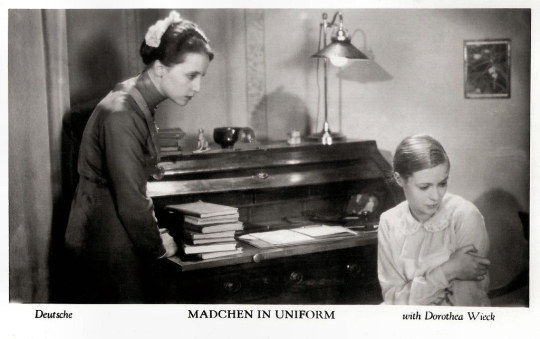
Mädchen in Uniform (1931) Carl Froelich
April 6th 2020
#madchen in uniform#1931#carl froelich#hertha thiele#dorothea wieck#emilia unda#ellen schwanneke#hedy krilla#annemarie von rochhausen#leontine sagan#favourite
14 notes
·
View notes
Photo
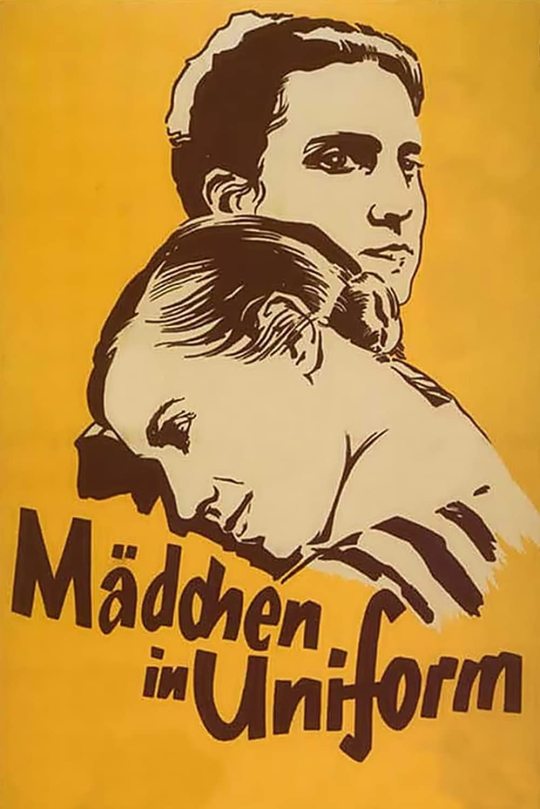
1 note
·
View note
Text
MADCHEN IN UNIFORM (’31): The First Lesbian Feature Film By Raquel Stecher
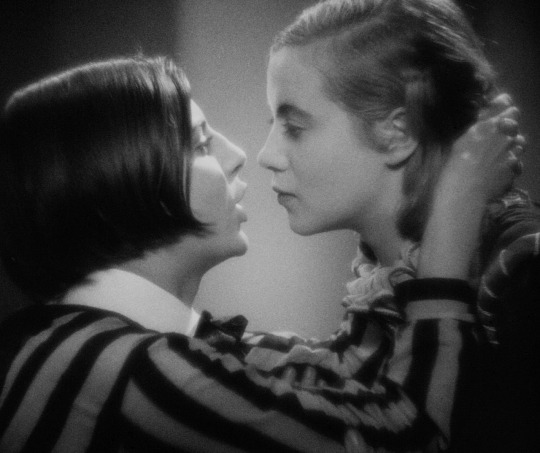
Director Leontine Sagan’s MADCHEN IN UNIFORM (’31) wasn’t the first movie that featured lesbian characters but it was certainly a notable one. This German film came during a time between WWI and WWII when there was a thriving gay subculture in parts of Europe. Movies like DIFFERENT FROM THE OTHERS (’19) and MICHAEL (’24) were born out of that era and candidly depicted gay relationships. Marlene Dietrich gave the world the first cinematic lesbian kiss in MOROCCO (’30). PANDORA’S BOX (’29), starring Louise Brooks, featured a lesbian subplot. This was a flourishing time for queer representation and it ended abruptly with the emergence of the Nazi regime.
MADCHEN IN UNIFORM was special in many regards. It’s the first feature film with a solely lesbian theme. It was based on a play written by a woman. It was directed by a woman, with an artistic director credit going to Carl Froelich. And, the cast was completely made up of women. Not a single man can be spotted throughout the whole movie.

Set in a Prussian all-girls boarding school, MADCHEN IN UNIFORM, which translates into “Girls in Uniform,” tells the story of new student Manuela (Hertha Thiele) and her attraction towards her instructor, Fraulein von Bernburg (Dorothea Wieck). The school is run by a strict headmistress, played by Emilia Unda, who extols Prussian virtues of discipline, obedience, restraint and self-denial. In the context of the story, these virtues are seen as old-fashioned and severe, something that the contemporary audience of Germany’s Weimar Republic would have agreed with. The headmistress creates an environment that stifles Manuela and her fellow students who find themselves in a fairly delicate stage of their development. Even though it’s a toned-down version of the original play, Sagan’s film is still a notably frank expression of lesbian romance. There is a kiss between Wieck and Thiele, an exchange of garments, a brief experimentation with gender identity and a passionate declaration of love.
Playwright Christa Winsloe based the story on her own experience at a Prussian boarding school. Writing the play was her way of processing the trauma of her youth. Upon the success of her play, Winsloe moved to Berlin and lived openly as a lesbian. She was once married to a Baron then later became romantically involved with two other women writers, newspaper reporter Dorothy Thompson and Swiss author Simone Gentet.
Winsloe’s play caught the eye of theater producer and actress Leontine Sagan. In her memoir, Sagan recalls MADCHEN IN UNIFORM “was an original play and true to life, but it was technically rough and amateurish in its dramaturgical structure. Nonetheless, I liked this unusual play about girls in a Prussian boarding school and made the author’s acquaintance.” MADCHEN IN UNIFORM would be Sagan’s directorial debut and she would later produce the play for the Duchess Theatre in London.

It was inevitable that changes had to be made to Winsloe’s original story. Overt lesbian themes were dialed back. Artistic director Froelich suggested that the ending be changed from tragedy to something that would be more open-ended. While Winsloe approved of the final film, she still felt a natural possessiveness towards her story. She novelized the film, her way of taking ownership of the story once again, and published MADCHEN IN UNIFORM as a book in 1933.
Upon release, critics and audiences alike raved about the movie. It received glowing reviews. While it was never widely released in the United States, it did ultimately screen in over 1,000 theaters. Andre Sennwald of The New York Times called it a “masterpiece”. Mordaunt Hall of the same publication said in two 1932 reviews “Few motion pictures have been endowed with the magnetic quality of MADCHEN IN UNIFORM… It is a film in which all the characters fasten themselves in one’s mind, not as actors, but as real persons. The performances of all are deserving of the highest praise.” Of course the film met with some opposition. It was “Banned in Boston”, a badge of honor for provocative work. Film producer John Krimsky battled with the Hays Office to get the film approved for distribution.
Producer David O. Selznick was so impressed with Sagan’s debut film that he invited her to Hollywood. She made two films there, both were flops, and returned to the theater where she thrived. Actress Dorothea Wieck was also courted by Hollywood. Paramount executives, intrigued by her striking resemblance to MGM star Norma Shearer, put her under contract. Wieck’s Hollywood films were box-office failures. She was booted out of tinseltown and unfairly labeled a Nazi spy. The irony was that Wieck was an outspoken critic of the Nazi regime and refused to act in Nazi propaganda films.
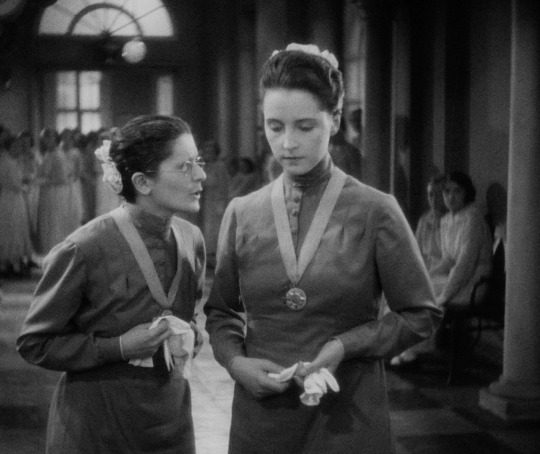
In fact most of the women involved with MADCHEN IN UNIFORM were courted by the Nazis. Although the film was banned in Nazi Germany and many copies were destroyed, Joseph Goebbels himself was a fan and called it a “magnificently directed, exceptionally natural and exciting film art”. Leontine Sagan, actresses Hertha Thiele and Erika Mann all refused offers by the Nazi government to use their talents for propaganda.
After the war, the film languished under censorship but never lost its appeal. It was remade several times including a 1958 film adaptation starring Lilli Palmer and Romy Schneider. It was in a long line of lesbian-themed stories set in all-girl schools, including Colette’s Claudine novels (she wrote the French subtitles for the film), Jacqueline Audry’s OLIVIA (’51) and William Wyler’s THE CHILDREN’S HOUR (’61). MADCHEN IN UNIFORM enjoyed a resurgence of interest in the 1970s finding fans among a growing community of feminists and lesbians with an interest in women directed films. Today it still stands as a seminal lesbian drama that deserves to be studied and appreciated.
#LGBTQ#lesbian representation#lesbian romance#Prussia#war#boarding school#TCM#Turner Classic Movies#Raquel Stecher
541 notes
·
View notes
Photo

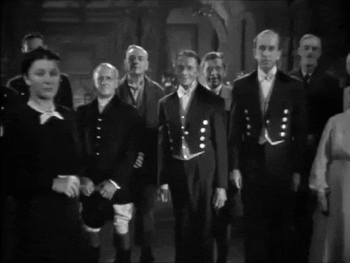
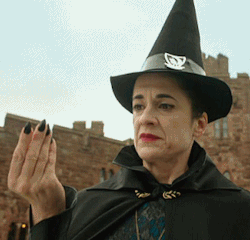



My fellow useless lesbians, can we take a moment to appreciate Raquel Cassidy's stunning performance as Hecate Hardbroom? The fact that we're all here for HB attests to the rich queer coding of this character, and moreover, to the continuing vitality of lesbian decoding practices. I can't stop thinking about how Cassidy masterfully deploys tropes with a deep history of queer connotation, so I wanted to situate Hecate in this genealogy. I'm proposing three longstanding lesbian motifs that resonate with Cassidy's interpretation of Miss Hardbroom, hopefully helping to illuminate why everyone is reading it as hella gay. This is written in the style of a grumpy old teacher, so each section includes an example from film history with a corresponding academic citation (Tumblr blocks posts with outside links; I recommend searching Google Books). :D?
1. lesbian gothic
Judith Anderson as Mrs. Danvers in Rebecca (Alfred Hitchcock, 1940)
It may be counterintuitive to link this cotton candy show to the gothic, but try shifting your point of view from the students to the teachers. The adults are dealing with family secrets, spectral paintings, authoritarian patriarchs, and of course, magical peril. Gothic references coalesce in Hecate Harbroom, the literally and figuratively dark presence with an uncanny ability to materialize at the moment of peak disobedience (she usually says "Mildred Hubble" but she might as well be saying "boo").
Patricia White, "Female Spectator, Lesbian Specter" from UnInvited: Classical Hollywood Cinema and Lesbian Representability (Indiana University Press, 1999)
A genealogy of The Haunting–and of the haunting of classical cinema by lesbianism–leads us to Alfred Hitchcock's Rebecca (1940), a key example of the female gothic, a genre that as a whole is concerned with heterosexuality as an institution of terror for women (64)... [In this film,] the heroine's desire is channeled toward Rebecca as a powerful presence-in-absence by [Mrs. Danvers], who enjoys a peculiar and intense relation to her former mistress and who functions as a sort of regent of Rebecca's reign at Manderly (65)... In the gothic narrative, the heroine's look is central yet unreliable, precisely because the female object sought by her gaze is withheld. This narrative can be seen to encode the dramas of desire and identification at stake in female spectatorship and the lesbian excess that haunts them, to remind us that we can't always believe our eyes (72).
The severe domestics and governesses of gothic mysteries harbor the story's secrets under their grim austerity, and these secrets always seem to have the flavor of sexual deviance. Hecate Hardbroom's reserved and gloomy vibe – and indeed, her "goth" style – evoke characters like Mrs. Danvers (a little too obsessed with an inappropriate crush from her past). This resonance "haunts" The Worst Witch with "lesbian excess" that can only be seen obliquely, and may even suggest "heterosexuality... as terror" (see s2e11 "Love at First Sight"). Thus the heritage of genre cues us to suspect that whatever repressed feelings animate Hecate's stern control must be tinged with forbidden desire, a queer allusion that is irresistibly seductive.
2. lesbian witch
Margaret Hamilton as The Wicked Witch of the West in The Wizard of Oz (Victor Fleming, 1939)
I'm sure I don't have to convince you that witches are the most obvious gay element in The Worst Witch. We're offered a spectrum of witchy genders (headcanon: Mr. Rowan-Webb is trans), and I ask you to bear with me through a theory. I would never call Hecate butch in today's terms – she's so glamorous with her sensuous fabrics and heavy eyeliner – but think 1930s notions of butch. Standing imperiously in head-to-toe black next to the brightly colored and approachable looks of other magical adults, Hecate inhabits the classic witch stereotype. This quintessential witch is threatening in her otherness because she has power that refuses and exceeds the standards of femininity.
Alexander Doty, "'My Beautiful Wickedness': The Wizard of Oz as Lesbian Fantasy" from Flaming Classics: Queering the Film Canon (Routledge, 2002)
It was probably during gay director George Cukor’s stint as production consultant on Oz that the Wicked Witch got her final look: a sharp nose and jawline, green face and body makeup, a scraggly broom, clawlike fingernails, and a tailored black gown and cape. This is the witch as creature, as alien, as monster, and as what straight, and sometimes gay, culture has often equated with these—butch dyke (58)... And let’s not forget that while Glinda may look like a fairy godmother, she is a witch, and is therefore connected to the Wicked Witch and to centuries-long Western cultural associations between witchcraft and lesbianism. So what we have set before us in The Wizard of Oz is the division of lesbianism into the good femme-inine and the bad butch, or the model potentially 'invisible' femme and the threateningly obvious butch (59)... The butch witch is both the potential source of fulfilled desires as well as the potential source of physical danger (68).
Hecate Hardbroom's "obvious" witchyness is frightening in a way that's delectable, because it whispers to us of a land "over the rainbow" where normative rules of gender and sexuality might be unbound. HB both threatens the kids with exposure through the potency of her magic and encourages them into the sisterhood of this forceful female energy. She links the forbidding/forbidden with the desire to adore and become it. When high femme Pippa Pentangle stands alongside Hecate, they echo Glinda's contrast with the Wicked Witch of the West as the light and dark sides of a queer paradigm: the coming-of-age fantasy of escaping from "Kansas" to "Oz" (or Cackle's Academy for girls only).
3. lesbian camp
Emilia Unda as Fräulein von Nordeck in Mädchen in Uniform (Leontine Sagan, Germany, 1931)
Camp is probably my #1 axis of delight in Raquel Cassidy's approach to Hecate. In Susan Sontag's formative 1964 essay "Notes on 'Camp'" (easily Googled), she defines camp as "the love of the exaggerated" and "the spirit of extravagance"; as "a mode of seduction–one which employs flamboyant mannerisms susceptible of a double interpretation"; as "a new, more complex relation to 'the serious'" that "identifies with what it is enjoying... a tender feeling." I can think of no better way to capture the superb balance of excessively theatrical gestures and glimpses of genuine emotion that I see in this character. Historically, camp is primarily associated with gay and effeminate men, but there has always been a place for women in camp's gender play. Katrin Horn locates the emergence of a visible lesbian camp in the New Queer Cinema moment of the 1990s, with films that took up a referential dialogue with the subtextual queer language of an earlier era.
Katrin Horn, "The Great Dyke Rewrite: Lesbian Camp on the Big Screen" from Women, Camp, and Serious Excess (Springer, 2017)
As a cinematic trope the boarding school setting dates back to at least 1931, when a nearly all-female crew produced Mädchen in Uniform... the associated story – emotional turmoil at all-girls boarding schools resulting in female bonding, homoerotic moments, and declarations of love between women – and its symbolism have been carried from Hollywood's classical era... But I'm a Cheerleader points to the heavily censored history of female-female desire onscreen [and] mocks the absurd and dark one-dimensionality of the boarding school trope (35-36)... [B]y consciously engaging with the cinematic history of lesbian representation, [camp films] reinscribe (pleasurable) lesbian presences into themes and tropes that had hitherto been connected to doomed and/or subtextual lesbian desire... Furthermore, they represent new forms of cinematic pleasure, as they infuse stereotypes which have historically as well as more recently been used mainly to disavow lesbian identity and sexuality with a sincerity of affect that recodes them as objects of identification and desire (37).
Mädchen in Uniform and related films (including the 1958 remake and 2006 reinterpretation Loving Annabelle) are lesbian tragedies, stories where forbidden desire between a teacher and student (or, in the case of 1961's The Children's Hour, two teachers) leads to heartbreak and ruin. The strict headmistress subjects the more romantic teacher to an all-knowing and judgmental gaze – but her relentless pursuit of perversion can always reverberate back to camp up this dour figure. Like the satirical lesbian comedy But I'm a Cheerleader (Jamie Babbit, 1999), The Worst Witch returns to the queer scene of the girls' boarding school in a more playful mode. As a camp performance, Cassidy's Hardbroom is a homage to Fräulein von Nordeck and her ilk, but one that transposes this archetype's threatening quality into a celebration of the deviance she originally stood against. Precisely by being over-the-top, Hecate's expressiveness embraces the stern teachers of yore with tenderness and a "sincerity of affect" that invites possibilities for pleasure and identification into this stereotype. By revisiting and reconfiguring the terms of queer representation, camp can effectively rewrite history – we may take more glee in earlier portrayals of the tragic lesbian or repressed disciplinarian today because she has been retroactively camped. Camp is reappropriation – its affection for extremes is simultaneously ridiculous and erotic (boosted here by liberal use of dramatic low-angle shots to frame Hecate as deliciously imposing). Children's television has always been a welcoming field for camp, which revels in its capacity to signal queerness through the seeming innocence of zany shenanigans. Cassidy described The Worst Witch as "a massive invitation to play" – her total commitment to this opportunity with a joyous camp sensibility enables a really dazzling modulation of lesbian cultural touchstones.
It would be worthwhile to read Hecate Hardbroom intertexually in relation to Raquel Cassidy's previous queer comedic roles... but that's a story for another day. I just wanted to explain why I think what she's given us in The Worst Witch is quite remarkable (and justify why I am utter trash right now). It's meaningful to me to connect the soup of digital ephemera and intemperate feels we're all swimming in now to a lineage of lesbian representation and spectatorship. Maybe this lofty outpouring is totally inappropriate to Tumblr [EDIT: so pleased it is appropriate <3], but I don't seem to be able to help myself – thank you truly for reading if you made it this far. Grumpy gay teacher signing off!
GIFs
Hecate: all-we-must-be | dismantledrose | andforgotten
Mrs. Danvers: Old Hollywood Films on giphy
Wicked Witch: gifswithkriz
Fräulein von Nordeck: mine
#hecate hardbroom#raquel cassidy#the worst witch#tww2017#lesbian representation#original#meta#tv is time travel#feels#flail#tropes#teaching#evil lesbians#her faaaaaaaace#divas#history#film#representation#queer#tldr
298 notes
·
View notes
Photo
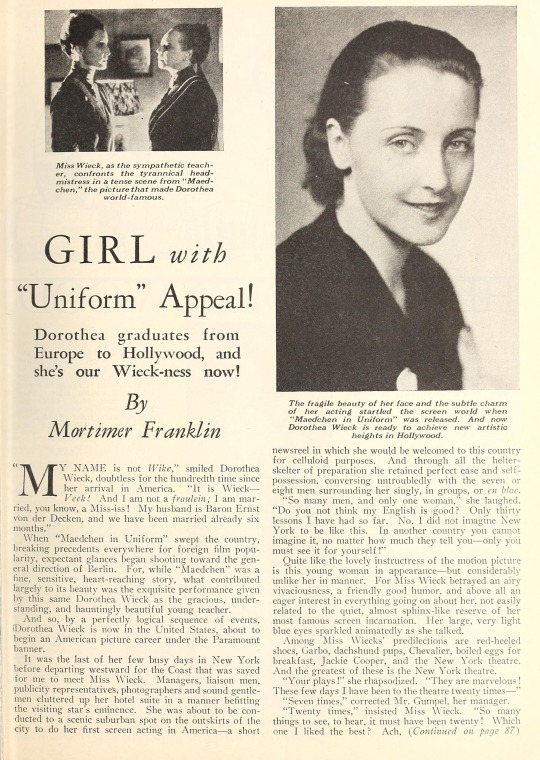
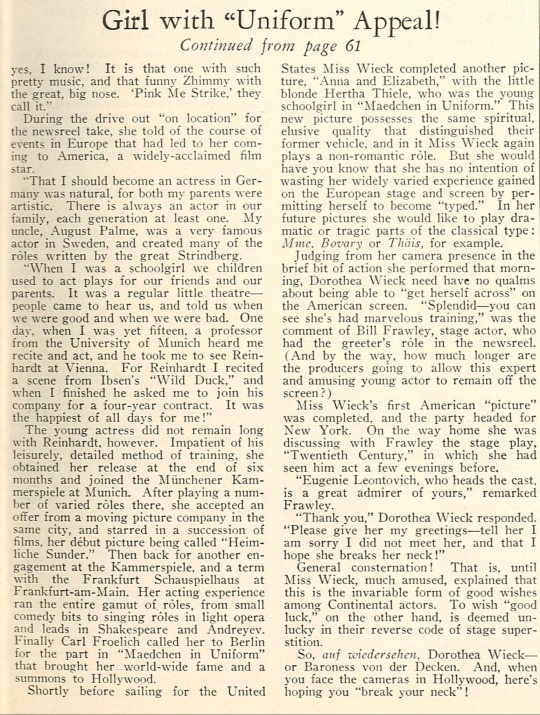
Dorothea Wieck: Girl Without Uniform
Text on both pages has the same size, but the second page is cut as only part is the end of the article.
If bigger size isn't accessible, PAGE 1, PAGE 2.
#Dorothea Wieck#Mädchen in Uniform#Madchen in Uniform#retro#vintage#1930's#1930s#Hollywood#Emilia Unda
35 notes
·
View notes
Text
Mädchen in Uniform

Year: 1931
Length: 1h 28min
Genre: Drama, Romance
Language: German
Director: Leontine Sagan
Starring: Hertha Thiele, Dorothea Wieck, Emilia Unda, Gertrud de Lalsky, Marte Hain, Hedwig Schlichter, Lene Berdolt
Story: Manuela von Meinhardis (Hertha Thiele) is enrolled in an all-girls school. There, she initially feels lost, due to her strict supervisors and teachers. Even though she quickly finds friends amongst her peers, she struggles with her school work. The only teacher who is nice to Manuela is Fräulein von Bernburg (Dorothea Wieck) and soon, Manuela falls in love with her.
Note: I watched this movie at university as part of a lecture series on films in pre-Nazi Germany, so I know more about it than the movies I usually review. I tried to keep the review as short as possible, but I might upload my lecture notes at a later point.
Pros:
Forbidden under Nazi regime: The movie was one of the first ones the Nazis banned when they gained power in 1933. The reason wasn’t the lesbian themes in the movie, but rather that many of the cast and crew were Jewish. Nevertheless, it is important to remember why Nazis banned certain movies and to look at this one, for example, with this knowledge in mind.
First lesbian movie: The film is one of the first ones with lesbian undertones ever made. I use the term undertones because, even though the lesbian themes in the movie were very obvious to me, they might be difficult to spot for a different audience, similar to the one which didn’t think Carol was a love story. To me, it’s obvious that Manuela is in love with Fräulein von Bernburg, and this isn’t a coincidence, but was deliberately chosen by Leontine Sagan, who was attracted to the play the film is based on due to its lesbian themes. Still, this isn’t an obvious love story like we are used to now in 2017, so don’t expect too much.
Happy ending: It is often said that Desert Hearts is the first lesbian movie with a happy ending. However, I would argue that it’s Mädchen in Uniform. Even though Manuela and Fräulein von Bernburg aren’t a couple in the end, they’re both alive and Fräulein von Bernburg even stands up for Manuela and defends her against the tyrannical headmistress (Emilia Unda)
Almost all-female cast and crew: If you remember Below Her Mouth, which came out a couple of months ago, you might also remember that it was praised for having an all-female crew. Mädchen in Uniform came out in 1931 – there isn’t a single man with a line of dialogue in this film. The screenplay was written by a woman, the director was a woman, some of the crew members were women. It’s sad that this is still something to be celebrated regarding a movie that came out in 2016.
No men: As I’ve already mentioned, there isn’t a single man in the movie. I can’t recall any other movie I’ve watched of which I can say that. All in all, it’s nice not having to watch men for a change.
Cons:
Student/teacher: Manuela is a 14-year-old girl who falls in love with her teacher. Nothing happens between them (apart from one kiss) and Fräulein von Bernburg is very strict when she tells Manuela that this won’t change. Still, such dynamics are always weird.
Child abuse: The boarding school Manuela goes to is horrible. The children are starved and when they write to their parents for help, their letters get intercepted and they are punished. The school uses Prussian discipline as a role model the students should follow as an example, but even though it is in accordance with the values of this time, the girls still suffer under the strict rules.
Homophobia: 4/10 – There is a discussion that love between two women isn’t normal. Manuela also gets into trouble for confessing her feelings for Fräulein von Bernburg.
Violence: 2/10 – Manuela’s love for Fräulein von Bernburg is never openly discussed, so the teachers tell the other students she is being punished for having been drunk. Manuela’s friends don’t understand why she is being locked away since all of them were drunk that night, but it never occurs to them that it could be because the teachers don’t think Manuela has an innocent “crush” on Fräulein von Bernburg, like most of the girls have.
Ending: The movie sort of has a happy ending, Manuela survives a mental breakdown and a suicide attempt and even though she and Fräulein von Bernburg don’t become a couple in the end (which would have been weird anyway), both of them are alive and overcome their obstacles.
Sexual orientation: The topic of sexual orientation isn’t discussed; it’s acceptable for the girls to sort of have a crush on Fräulein von Bernburg. She is the favourite teacher of everyone and the girls swoon over her in a way that suggests that at least some of them have a crush on her. They are all jealous of Manuela and one of her friends because Fräulein von Bernburg is the head of their dormitory and kisses them good night every evening. Rather than those feelings being accepted as romantic, it doesn’t occur to the students that they are in love with their teacher. When Manuela openly talks about her feelings and names them for what they are, she is immediately punished by the headmistress.
25 notes
·
View notes
Photo

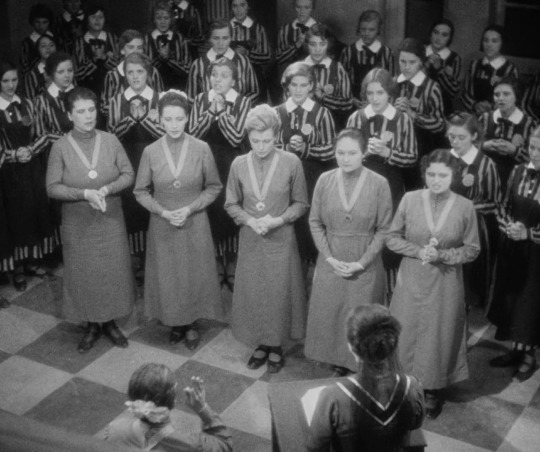
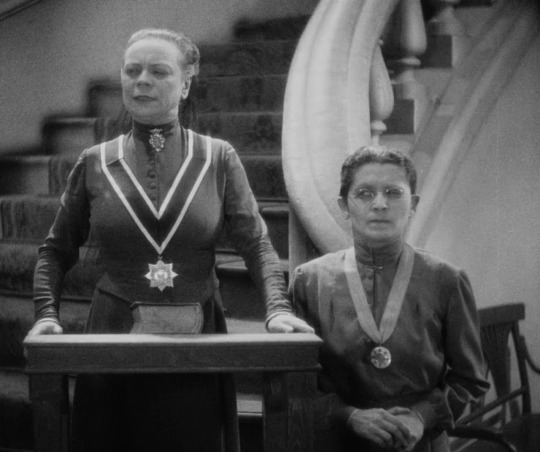
Mädchen in Uniform | Leontine Sagan / Carl Froelich | 1931
Emilia Unda, Hedy Krilla, Dorothea Wieck, Margory Bodker, Lisi Scheerbach, Hertha Thiele, Ellen Schwanneke, et al.
#Emilia Unda#Hedy Krilla#Dorothea Wieck#Margory Bodker#Lisi Scheerbach#Hertha Thiele#Ellen Schwanneke#Leontine Sagan#Carl Froelich#Mädchen in Uniform#1931#Madchen in Uniform#Madchen in Uniform 1931
47 notes
·
View notes
Text
SA’N ang DAAN?/Julianna Dungca
February 6, 1931 is the day my grandmother was born. Oo, kahapon ang kaniyang birthday, 88th birthday to be exact.To be honest, she’s not my biological grandmother, siya yung nag-alaga sa akin nung baby pa ako and sa kanya ako nagbabakasyon ako sa Manila every summer back when I was in elementary. Apparently, mas close pa ako sa kanya kesa duon sa biological grandmother ko. I actually hate myself for not remembering that it’s her birthday yesterday. Kung hindi ko pa nakita yung post ng mga kamag-anak namin sa Ilocos Norte, hindi ko pa malalaman.
I hate myself kasi para narin akong mga kamag-anak ng mga Lola duon sa documentary na ginawa ni Ms. Kara David. Mrs. Lourdes Coloma Manzanillo is my grandmother’s name. She’s also from Ilocos, Norte nga lang haha na nakapangasawa ng taga-Maynila pero she’s now a widow and wala silang anak. Kung titignan, para siyang si Lola Felicidad Cabuena, Lola Emilia Cabotage and Lola Quintina Sabalo na pinagsama-sama. Lola Felicidad na maraming pinag-aral, maraming inaruga-thinking na maraming mag-aalaga sa kanya in the future, pero ngayon iilan nalang ang family na tumatawag sa kanya. She’s now abandoned. Like Lola Felicidad, my Lola Lourdes also collects picures. She loves showing them to us when I was young. When she was here in Tarlac, I asked her what happened to those she helped to study there in Manila, she only answered, “Hindi ko na alam kasi kung nasaan sila, ang alam ko may pamilya na din sila o kaya nasa America na siguro hahahaha.” And I wished I didn’t asked her that question because it pained my heart na yung iba ko palang kamag-anak ay kayang gawin yun.
My Lola Lou is also like Lola Emilia Cabotage na gusto nang mamatay. She’s a widow and she doesn’t have kids. It started when her husband died and I myself, I witnessed how she went through her emotional breakdown. Buong araw siyang iyak-iyak dahil sinasabi niya na ‘till death do as part daw sila ng kanyang asawa kaya naman gusto niya nang sundan. All day, iyak siya ng iyak, nagdadasal na kunin na siya ng Panginoon dahil hindi niya na daw kaya na wala ang kanyang asawa.Kapag malapit na ang kaarawan, kamatayan at Undas, ayan na si Lola Lou, iiyak na yan sa kwarto niya. Hanggang ngayon, kahit 3 years nang nakakalipas since her husband died, she still wears black for her husband. Even kahapon, kahit birthday niya. This coming February 13, is her husband’s birthday- I pray na ‘wag naman sana umiyak na ang Lola Lou dahil baka mahimatay na naman siya sa kakaiyak, kasi yun yung nangyari after she had her breakdown here in Tarlac.
Lastly, she is like Lola Quintina na sobrang saya when we achieve something. Like what I’ve said a while ago, she loves collecting pictures, and those pictures were graduation pictures of her apos, anak-anakan. I have a lot of pictures in her photo album. She took care of me and my brother right? So kapag mga recognition rights na, I can still remember na kapag tatawag kami at kapag nasabi namin na aakyat sila ni Mommy at Mama Siding sa stage ay unang- unang sisigaw. Lahat ng makakasalubong niya ay pinagmamalaki niya kami ng aking kuya. Sinasabi niya siya daw ang nagpalaki sa amin hahaha. Kapag naaalala ko yun, hindi ko mapigilang hindi matuwa. She’s like a mother for me and I’m so blessed to have her as one of my Lolas. She wants to die foor her husband yet she still wants to see me with my sablay hahaha. Yesterday, when I told her about my grades isa lang sinabi niya, “Sabi ko na nga ba’t apo talaga kita eh. Keep it up! I still want you to graduate. Patunayan mo na isa kang Coloma. Gusto ko lagpasan mo pa yung Kuya mo hahahaha. Ipagpatuloy mo lang yan Kuli, para maipagmalaki kita dito sa mga kumare ko dito.” And with that, I was kindaa teary-eyed hahahaha.
Just like those Lola, my Lola also don’t know paano siya tumatagal dito sa Earth ang sinasabi niya lang sa akin, kain daw ako ng maraming gulay. Yun daw ang sikreto niya. It’s true that the most precious gift from God is your life, so you need to take care of it. For those who are reading this (ay kacharot hahahaha) I pray that when you grow up, you won’t ask other people “SA’N ang DAAN?” for there is someone who is guiding you in your journey or helping you walk through your life.
0 notes
Link
0 notes